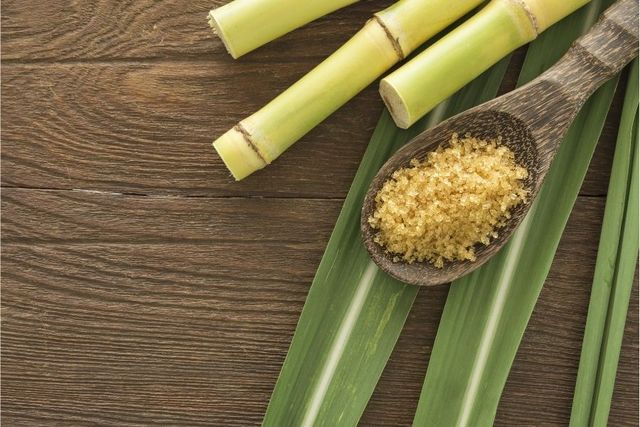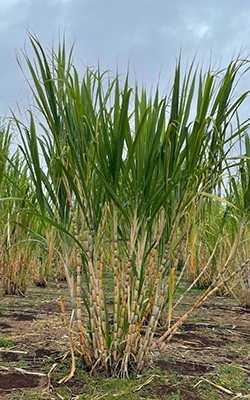Checking Out the Complete Line of Process Chemicals: What Are Sugar Canes Utilized For in Production?
Sugar canes play an essential function in numerous manufacturing procedures, working as a functional resources. Their high sucrose web content makes them necessary in the food industry, while innovations in biofuels and naturally degradable plastics highlight their prospective past conventional uses. Furthermore, sugar walking stick extracts are getting acknowledgment in pharmaceuticals and nutraceuticals for their wellness benefits. The diverse applications of sugar walking sticks increase appealing inquiries concerning their future in commercial fields. What possibilities exist in advance?

The Journey of Sugar Cane: From Field to Manufacturing facility
As the sunlight increases over vast fields, the trip of sugar walking cane begins, marked by careful cultivation and harvesting processes. Farmers pick ideal selections, making certain robust development in appropriate climates. Regular watering and nutrient monitoring are vital, promoting healthy and balanced stalks rich in sucrose. When mature, the walking cane is gathered, often using mechanical cutters that effectively gather the stalks.Once gathered, the sugar cane is carried to processing centers where it goes through crushing and cleaning to remove juice. This juice is then clarified, getting rid of contaminations through sedimentation and purification. The clear liquid is focused by evaporation, and consequently crystallized to generate raw sugar.Throughout this journey, quality assurance is critical, making certain that the end product satisfies industry requirements. The change of sugar cane right into raw sugar highlights an intricate interaction of agriculture and manufacturing, establishing the phase for its diverse applications in different sectors.
Biofuels: Harnessing Energy From Sugar Walking Cane
A considerable section of the globe's biofuel manufacturing is originated from sugar walking stick, which serves as a renewable resource source. This functional crop is primarily refined to draw out sucrose, which can be fermented to produce ethanol. Ethanol acquired from sugar cane is not just a clean-burning gas alternative however additionally contributes to reducing greenhouse gas discharges contrasted to standard nonrenewable fuel sources. In countries like Brazil, sugar walking stick biofuel has ended up being a substantial part of the energy matrix, powering lorries and reducing dependence on imported oil. The growing of sugar walking stick for biofuels additionally sustains country economies, offering jobs in farming and processing. Additionally, the spin-offs of sugar cane processing, such as bagasse, are utilized in power generation, more boosting the sustainability of the manufacturing cycle. On the whole, sugar walking cane biofuels represent an encouraging method for achieving power freedom while promoting ecological stewardship.
Biodegradable Plastics: The Lasting Remedy
What happens if the solution to the worldwide plastic situation hinges on biodegradable alternatives? Eco-friendly plastics, obtained from renewable energies such as sugar walking canes, provide an innovative strategy to lowering plastic waste. Unlike standard plastics, which can take centuries to disintegrate, these green materials break down naturally, decreasing ecological impact.The manufacturing of biodegradable plastics entails using sugars from sugar canes to develop polylactic acid (PLA) and various other biopolymers. These products maintain similar capability to traditional plastics, making them appropriate for various applications, including packaging, utensils, and farming films.As customers and industries shift towards sustainability, naturally degradable plastics provide a compelling option. They not just decrease dependence on fossil gas yet likewise support a circular economic situation by going back to the earth without leaving harmful deposits. The increasing need for such materials signifies a significant step towards addressing the pressing demand for more lasting manufacturing remedies despite ecological challenges.
Sugar Walking Cane Extracts in Nutraceuticals and drugs

The Future of Sugar Walking Stick in Industrial Applications
As sectors remain to look for sustainable and sustainable sources, sugar cane is positioned to play an essential duty in various commercial applications beyond its conventional usage in sugar production. Its biomass provides a renewable source for biofuels, reducing reliance on nonrenewable fuel sources and contributing to reduced carbon emissions. Furthermore, sugar walking stick's byproducts, such as bagasse and molasses, are being discovered for their possibility in bioplastics and eco-friendly products, attending to the expanding demand for ecologically pleasant product packaging solutions.Research is also underway to enhance the efficiency of sugar walking cane derivatives in various fields, including fabrics, cosmetics, and building. By using the distinct buildings of sugar cane, producers can develop cutting-edge products that line up with consumer choices for sustainability. As innovation advances, the flexibility of sugar walking stick will likely broaden, strengthening its position as a principal in the shift toward a more sustainable commercial landscape.

Frequently Asked Inquiries
What Is the Refine of Refining Sugar Walking Cane Into Sugar?
The procedure of refining sugar walking stick right into sugar entails harvesting, squashing to extract juice, clarifying the juice, vaporizing water, crystallizing sugar, and ultimately drying out and packaging the refined product for distribution and consumption. (What Are Sugar Canes important site Used For)
How Does Sugar Walking Stick Effect Local Economies?
Sugar cane significantly affects neighborhood economies by producing jobs, increasing farming production, and generating income through exports. Its cultivation supports little farmers and regional organizations, promoting community development and enhancing total financial security in sugar-producing areas.
Are There Any Ecological Interest In Sugar Walking Stick Farming?
Ecological worries connected with sugar walking cane farming consist of deforestation, soil deterioration, water usage, and chemical overflow (What Are Sugar Canes Used For). These problems influence neighborhood communities and add to environment change, motivating ask for even more sustainable agricultural techniques within the industry
What Are the Nutritional Conveniences of Sugar Walking Stick?
The dietary benefits of sugar cane include its rich content of vitamins, antioxidants, and minerals. It gives natural power, supports hydration, and may help digestion, adding favorably to general health and wellness when eaten in moderation.
Exactly How Does Sugar Walking Cane Contrast to Various Other Crops in Sustainability?
Sugar walking cane displays greater sustainability compared to several plants because of its reliable usage of land and water sources, capacity to generate biofuels, and capacity for carbon sequestration, contributing positively to environmental health and farming methods. When mature, the cane is gathered, often making use of mechanical cutters that successfully gather the stalks.Once accumulated, the sugar walking cane is transported Website to processing centers where it undergoes washing and grating to draw out juice. Unlike traditional plastics, which can take centuries to disintegrate, these eco-friendly products damage down normally, minimizing environmental impact.The manufacturing of biodegradable plastics includes making use of sugars from sugar canes to produce polylactic acid (PLA) and other biopolymers. Often acknowledged for their duty in sugar manufacturing, sugar walking stick removes are significantly discovering applications in the nutraceutical and pharmaceutical industries. As sectors continue to look for lasting and sustainable sources, sugar walking stick is positioned to play an essential duty in different commercial applications beyond its standard use in sugar manufacturing. Furthermore, sugar walking stick's spin-offs, such as bagasse and molasses, are being explored for their potential in bioplastics and naturally degradable products, attending to the growing need for eco friendly packaging solutions.Research is additionally underway to improve the efficiency of sugar cane derivatives in numerous industries, consisting of fabrics, cosmetics, and building and construction.